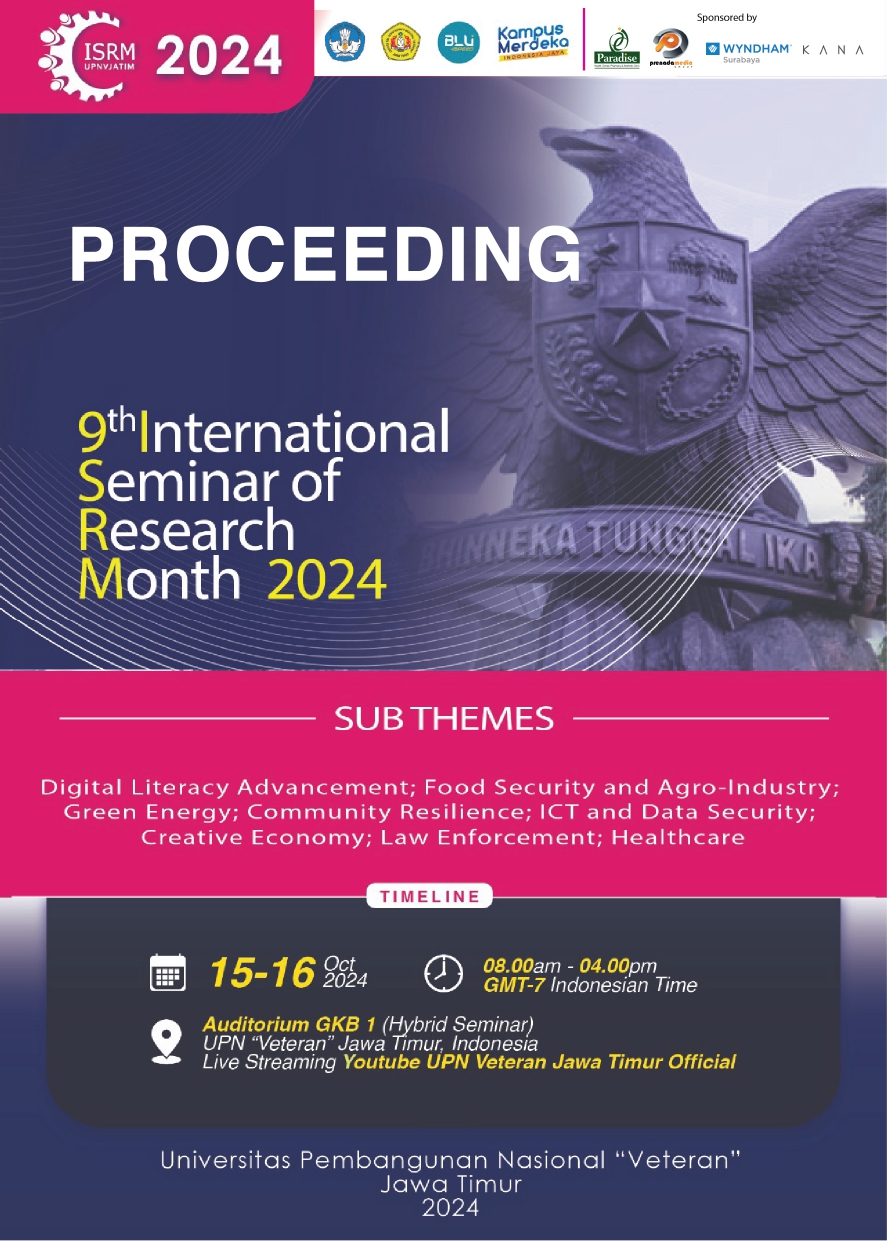Arts and Cultural Innovation-Green Techno Park UNNES in Supporting the the Creative Economy
DOI:
https://doi.org/10.11594/nstp.2025.4752Keywords:
Creative economy, innovation, Art, Culture, Green Techno ParkAbstract
The assessment of economic growth refers to three things, namely innovation, creativity, and artistic ability. UNNES as an educational institution can also contribute to economic progress through these three aspects: culture, in this case, arts and culture innovation. Currently, UNNES has a GTP (Green Techno Park) cluster as the embryo of STP (Science Techno Park). One of the priority programs for developing GTP in the medium term for the next 3 (three) years is Arts and Culture Innovation. Therefore, start from the stages of preparing facilities and infrastructure, identifying the main components in STP, and identifying UNNES's Leading Arts and Cultural Innovations, which can become one of the Creative Economy Products in the medium term. The results of the research have resulted in the design of GTP UNNES Cultural Arts facilities and infrastructure which are equipped with workshop space, the formation of managers, the existence of sources of knowledge, ideas, and discoveries related to arts and culture, and the superior results of UNNES arts and culture are Rasendriya, batik and eco-print with various product diversifications that lead to creative economy.
Downloads
References
Darmawati, E., & Sutopo. (2021). Penerapan teknik eco print pewarna daun jati pada kulit tersamak terhadap ketajaman warna dan ketahanan luntur. Majalah Kulit Politeknik ATK Yogyakarta Universitas Negeri Semarang. (2023) Renstra UNNES. Tahun 2023-2028.
Direktorat Perencanaan dan Keuangan. (2023). Rencana Strategis PTN BH UNNES 2023-2028. https://drive.google.com/file/d/1fJmHGB4oR195Qf92vAhgyot68mtiGLfd/view?pli=1
Fadillah, I. Z., & Naam, M. F. (2022). Batik sumber ide ratu kalinyamat dan ornamen masjid Mantingan Jepara. Jurnal Teknobuga, 10(2), 86-95.
Indonesian Ministry of National Development Planning. (2014). Rencana Pembangunan Jangka Menengah Nasional (RPJMN) 2015-2019.
Indonesian Ministry of National Development Planning: Rencana Pembangunan Jangka Menengah Nasional (RPJMN) 2015–2019
Muhammad, N. A., Muhyiddin, Bawazier, T., Anindito, I. A., et al. (2015). Studi pengembangan technopark di Indonesia: Survey terhadap 10 embrio technopark di Indonesia. Tim Analisis Kebijakan. Bappenas. Jakarta (Indonesia).
Oh, D-S., & An, G-D. (2012). Three Stages of Science Park Development: The case of daedeok innopolis foundation. JSPS Asian CORE Program, Nagoya University and VNU University of Economics and Business
Peraturan Presiden Republik Indonesia Nomor 106 Tahun 2017 Tentang Kawasan Sains Dan Teknologi. [Cited 15 Desember 2023]. https://www.bpkp.go.id/
Retnoningsih, A., Widowati, Khafid, M., & Sucihatiningsih, D. W. P. (2021). Jejaring usaha “Rasendriya kriya tulang daun” sebagai strategi keberlanjutanprogram pengembangan usaha produk intelektual kampus. Jurnal Pengabdian kepada Masyarakat, 3(1), 35-43
Saraswati, R., Candra, R., & Dwi, F. (2019). Buku pemanfaatan daun untuk eco print dalam menunjang pariwisata.
Soenarso, W. S., Nugraha, D., & Listyaningrum, E. (2013). Development of Science and Technology Park (STP) in Indonesia to support innovation-based regional economy: Concept and early stage development. WTR, 2, 32-42.
Wahyuningsih, F. S., Purwanto, & Haryanto, E. (2022). Serangga sebagai subjek berkarya seni lukis batik. Journal of Art Education, 11(3), 39-51
Downloads
Published
Conference Proceedings Volume
Section
License

This work is licensed under a Creative Commons Attribution 4.0 International License.
Authors who publish with this proceedings agree to the following terms:
Authors retain copyright and grant the Nusantara Science and Technology Proceedings right of first publication with the work simultaneously licensed under a Creative Commons Attribution License that allows others to share the work with an acknowledgement of the work's authorship and initial publication in this proceeding.
Authors are able to enter into separate, additional contractual arrangements for the non-exclusive distribution of the proceedings published version of the work (e.g., post it to an institutional repository or publish it in a book), with an acknowledgement of its initial publication in this proceeding.
Authors are permitted and encouraged to post their work online (e.g., in institutional repositories or on their website) prior to and during the submission process, as it can lead to productive exchanges, as well as earlier and greater citation of published work (See the Effect of Open Access).














